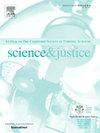The isotopic and elemental patterns of uranium ore as tools for its provenance determination: A systematic review
IF 1.9
4区 医学
Q2 MEDICINE, LEGAL
引用次数: 0
Abstract
This systematic review explores the potential of isotopic and elemental analysis of uranium ore as tools for provenance determination. This capability is vital for effective criminal investigations involving illicit trafficking, environmental contamination, terrorism and nuclear proliferation. A comprehensive literature review was conducted across multiple databases, focusing on studies that utilized isotopic and elemental analysis techniques for uranium origin assessment. The included studies were critically evaluated for methodological rigor. The review found that both isotopic and elemental analysis provides valuable insights into the provenance of uranium ore. Isotopic analysis, in particular, has been established as a powerful tool for tracking the origin of uranium ore. It has potential applications in forensic investigations, nuclear security and safeguards. However, the full potential of elemental patterns remains underutilized. Integrating both techniques could enhance the discriminatory power of provenance assessments. Key challenges, such as limitations in existing databases, analytical techniques and sample contaminations, hinder the definitive determination of uranium origin. To address these challenges, the review emphasizes the need for collaboration between researchers and law enforcement agencies. This collaboration should focus on expanding geochemical databases, developing standardized methodologies, and fostering interdisciplinary cooperation. By overcoming these limitations, the forensic community can significantly improve its ability to investigate uranium-related crimes, contributing to national security, safeguards and environmental protection.
铀矿石同位素和元素模式作为确定其物源的工具:系统综述
本系统综述探讨了铀矿石同位素和元素分析作为确定物源工具的潜力。这种能力对于有效调查涉及非法贩运、环境污染、恐怖主义和核扩散的刑事案件至关重要。对多个数据库进行了全面的文献综述,重点是利用同位素和元素分析技术进行铀来源评估的研究。对纳入的研究进行了方法学严谨性的严格评估。审查发现,同位素和元素分析都为了解铀矿石的来源提供了有价值的见解。特别是同位素分析已被确立为追踪铀矿石来源的有力工具,在法医调查、核安全和保障方面具有潜在的应用前景。然而,基本模式的全部潜力仍未得到充分利用。将这两种技术结合起来可以增强种源评估的鉴别能力。现有数据库的限制、分析技术和样品污染等主要挑战阻碍了对铀来源的明确确定。为了应对这些挑战,该综述强调了研究人员和执法机构之间合作的必要性。这种合作应侧重于扩大地球化学数据库、发展标准化方法和促进跨学科合作。通过克服这些限制,法医学界可以大大提高其调查与铀有关的犯罪的能力,从而为国家安全、保障和环境保护作出贡献。
本文章由计算机程序翻译,如有差异,请以英文原文为准。
求助全文
约1分钟内获得全文
求助全文
来源期刊

Science & Justice
医学-病理学
CiteScore
4.20
自引率
15.80%
发文量
98
审稿时长
81 days
期刊介绍:
Science & Justice provides a forum to promote communication and publication of original articles, reviews and correspondence on subjects that spark debates within the Forensic Science Community and the criminal justice sector. The journal provides a medium whereby all aspects of applying science to legal proceedings can be debated and progressed. Science & Justice is published six times a year, and will be of interest primarily to practising forensic scientists and their colleagues in related fields. It is chiefly concerned with the publication of formal scientific papers, in keeping with its international learned status, but will not accept any article describing experimentation on animals which does not meet strict ethical standards.
Promote communication and informed debate within the Forensic Science Community and the criminal justice sector.
To promote the publication of learned and original research findings from all areas of the forensic sciences and by so doing to advance the profession.
To promote the publication of case based material by way of case reviews.
To promote the publication of conference proceedings which are of interest to the forensic science community.
To provide a medium whereby all aspects of applying science to legal proceedings can be debated and progressed.
To appeal to all those with an interest in the forensic sciences.
 求助内容:
求助内容: 应助结果提醒方式:
应助结果提醒方式:


